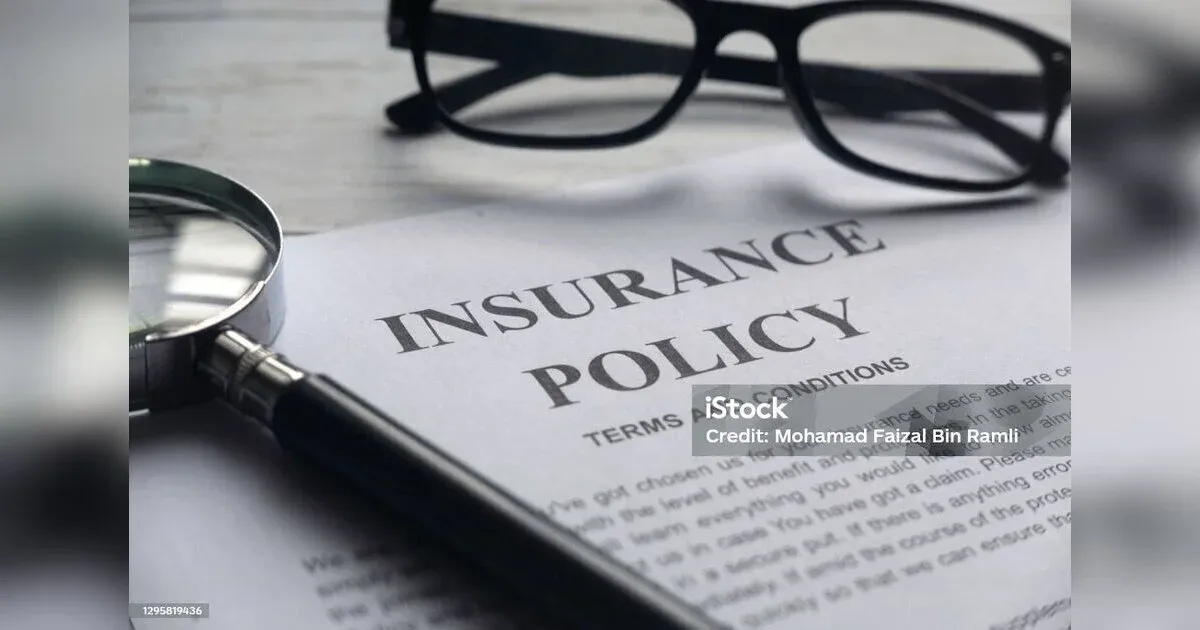This comprehensive guide will walk you through various tips and strategies to help you save on car insurance. By understanding how insurance rates are determined and taking proactive steps, you can find ways to cut costs without sacrificing coverage.
Car insurance is an essential part of vehicle ownership, but it doesn’t have to be a financial burden. With the right approach, you can significantly reduce your premiums while ensuring you have the coverage you need.
This comprehensive guide will walk you through various tips and strategies to help you save on car insurance. By understanding how insurance rates are determined and taking proactive steps, you can find ways to cut costs without sacrificing coverage.
Understanding Car Insurance Premiums
To start, it’s important to understand what affects your car insurance premiums. Your premium is the amount you pay for your insurance policy, usually on a monthly or annual basis. Here are some factors that influence how much you pay:
- Your Driving History
Drivers with clean records generally pay lower premiums. Traffic violations and accidents can increase your rates. Insurance companies view a history of safe driving as a sign of lower risk, which can translate into lower costs for you.
- The Type of Car You Drive
The make and model of your car can affect your insurance costs. Expensive or high-performance cars often cost more to insure. Vehicles with advanced safety features and lower repair costs, however, may qualify for discounts.
- Your Location
Where you live can impact your insurance rates. Areas with higher crime rates or more traffic accidents typically result in higher premiums. Additionally, urban areas with dense traffic may also lead to higher insurance costs compared to rural locations.
- Your Age and Gender
Younger drivers and male drivers often face higher rates due to statistically higher risk. Insurance companies use age and gender as factors in predicting risk, with younger drivers and males being statistically more likely to be involved in accidents.
- Your Credit Score
In many states, your credit score can impact your insurance rates. A higher credit score is often associated with lower premiums, as it indicates financial responsibility. Maintaining a good credit score can help you secure better insurance rates.
- Your Insurance History
Having a history of continuous coverage can also affect your rates. Gaps in insurance coverage can be viewed as a risk factor, leading to higher premiums. Maintaining consistent insurance coverage demonstrates reliability and can help in keeping your rates lower.
- The Coverage Levels You Choose
The amount of coverage you select can impact your insurance costs. Higher coverage limits and additional types of coverage, such as comprehensive or collision, will generally increase your premiums. Balancing the level of coverage you need with your budget is essential for managing costs.
- Discounts and Savings
Taking advantage of various discounts can lower your premiums. Common discounts include those for safe driving, low mileage, bundling multiple policies, or having advanced safety features in your car. Each insurance company offers different discount options, so it’s worth exploring what’s available to you.
- Vehicle Usage
How you use your vehicle can affect your insurance rates. If you use your car for business purposes or frequently drive long distances, your premiums may be higher. On the other hand, if you use your vehicle primarily for short commutes or leisure, you might qualify for lower rates.
- Safety Features
Cars equipped with modern safety features like anti-lock brakes, airbags, and automatic emergency braking systems can qualify for lower insurance premiums. These features help reduce the risk of accidents and injuries, making your car less expensive to insure.
Tips and Strategies for Lower Premiums
Here are tips and strategies for lower premiums.
Shop Around and Compare Quotes
One of the most effective ways to save on car insurance is to shop around and compare quotes from different insurers. Insurance rates can vary significantly between companies, so it’s worth taking the time to explore your options. Here’s how to do it:
- Use Comparison Websites
Online comparison tools allow you to get quotes from multiple insurance providers by entering your information just once. This can save you time and give you a broad view of available rates.
- Contact Insurance Agents Directly
Speaking with an insurance agent can sometimes yield more personalized quotes and may reveal discounts that aren’t advertised online.
- Check Customer Reviews
Research customer reviews and ratings to ensure the insurance company you’re considering offers reliable service and support.
By comparing quotes, you can find the best rates and make sure you’re getting good value for your money.
Bundle Your Policies
Bundling your insurance policies is a popular strategy for saving money. Many insurers offer discounts if you combine multiple types of coverage, such as auto and home insurance, with the same provider. Here’s how bundling can benefit you:
- Discounts
Insurance companies often provide significant discounts for bundling policies. This can lead to substantial savings compared to buying each policy separately.
- Convenience
Managing all your insurance policies with one provider can simplify your life. It’s easier to track payments and keep your insurance organized.
If you have multiple insurance needs, bundling can be a smart way to save money and streamline your coverage.
Increase Your Deductible
Your deductible is the amount you agree to pay out of pocket before your insurance coverage kicks in. Increasing your deductible can lower your monthly premiums, but it’s important to choose an amount you can afford in case you need to make a claim. Here’s what to consider:
- Choose an Affordable Deductible
Make sure you select a deductible that fits within your budget. While a higher deductible can lower your premiums, it’s crucial that you can cover the cost if you need to file a claim.
- Evaluate Your Savings
Increasing your deductible can lead to lower monthly premiums, but you’ll need to weigh the potential savings against the risk of having to pay a higher amount out of pocket in the event of a claim.
Finding the right balance between your deductible and your premiums can help you save money while ensuring you’re adequately covered.
Maintain a Good Driving Record
Maintaining a clean driving record is one of the best ways to keep your insurance premiums low. Insurance companies view drivers with clean records as lower risk, which often translates to lower rates. Here’s how to keep your record clean:
- Practice Safe Driving
Adhering to traffic laws and avoiding risky behaviors, such as speeding or aggressive driving, can help you avoid accidents and traffic violations.
- Take Defensive Driving Courses
Many insurance companies offer discounts to drivers who complete defensive driving courses. These courses can also improve your driving skills and reduce the likelihood of accidents.
A clean driving record not only helps you save on insurance but also contributes to safer roads for everyone.
Drive a Safe and Reliable Car
The type of car you drive can have a significant impact on your insurance rates. Vehicles that are considered safe and reliable often come with lower premiums. Consider the following when choosing a car:
- Safety Ratings
Cars equipped with advanced safety features and high safety ratings are often cheaper to insure. Features such as anti-lock brakes, airbags, and stability control can help lower your rates.
- Cost of Repairs
Vehicles that are expensive to repair or have high replacement costs generally result in higher insurance premiums. Opting for a car that’s less costly to repair can help you save money on insurance.
Choosing a car with good safety features and lower repair costs can help you reduce your insurance premiums while keeping you and your passengers safe.
Take Advantage of Discounts
Insurance companies offer a variety of discounts that can help you save on your premiums. Be sure to ask about and take advantage of these opportunities:
- Good Student Discount
If you’re a student with good grades, you might qualify for a discount on your insurance premiums.
- Low Mileage Discount
If you drive fewer miles than average, you could be eligible for a discount. Some insurers offer reduced rates for low-mileage drivers.
- Safety Features Discount
Vehicles equipped with safety features like anti-theft systems, airbags, and advanced braking systems might earn you a discount.
Be proactive in inquiring about available discounts and make sure you’re receiving all the savings you qualify for.
Improve Your Credit Score
In many states, your credit score can impact your insurance rates. A higher credit score often results in lower premiums. Here’s how you can improve your credit score:
- Pay Your Bills on Time
Consistently paying your bills on time can positively impact your credit score. Set up reminders or automatic payments to help you stay on track.
- Reduce Your Debt
Lowering your credit card balances and overall debt can improve your credit score and potentially lower your insurance premiums.
Improving your credit score not only benefits your insurance rates but also helps with other financial aspects of your life.
Review and Update Your Policy Regularly
Your insurance needs can change over time, so it’s important to review and update your policy regularly. Here’s how to keep your policy in check:
- Annual Reviews
Review your insurance policy each year to ensure it still meets your needs. Take advantage of any new discounts or savings opportunities.
- Adjust Coverage
If you’ve made changes, such as moving to a new location or upgrading your vehicle, update your policy to reflect these changes. This can help you maintain the right level of coverage and potentially save money.
Regularly reviewing your policy ensures that you’re always getting the best value for your insurance coverage.
Use Telematics or Usage-Based Insurance
Telematics or usage-based insurance programs use technology to monitor your driving habits. If you’re a safe driver, you might be able to save money with these programs. Here’s how they work:
- Track Your Driving
Devices or apps track your driving behavior, including speed, braking, and mileage. This information is used to assess your risk level.
- Earn Discounts
Safe driving habits can lead to discounts based on your actual driving behavior. Insurance companies use this data to offer personalized rates.
Telematics programs can provide savings for drivers who consistently practice safe driving habits.
Consider Your Coverage Needs
Finally, assess your coverage needs to avoid paying for unnecessary insurance. While it’s important to have adequate coverage, you don’t want to overpay for features you don’t need. Consider the following:
- Liability Coverage
Ensure you have enough liability coverage to meet legal requirements and protect your assets. This is usually the minimum required coverage.
- Optional Coverages
Evaluate whether you need additional coverage, such as rental car coverage or roadside assistance, based on your circumstances and preferences.
Choosing the right level of coverage ensures that you’re protected without paying for unnecessary extras.
Conclusion
Saving on car insurance doesn’t have to be complicated. By following these tips and strategies, you can reduce your premiums while still maintaining the coverage you need. Remember to shop around for the best rates, take advantage of discounts, and regularly review your policy. With a little effort, you can enjoy affordable car insurance and keep more money in your wallet.


























